

GENETICS AND HIST1H1E
When Genetic Changes Occur
Your child’s genetic lab results should list their type of mutation, also referred to as an Alteration. Sample Whole Exome Sequencing Report:
In the summary text on your child’s lab report, there may be more information about the finding. Most laboratories will list the evidence used to classify the finding as harmful, or “disease causing.” A laboratory report may also give you information about the type of mutation that was identified.

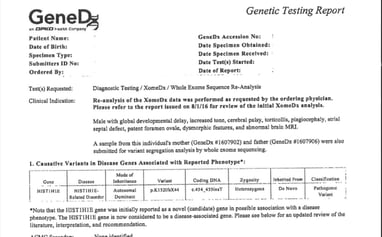
TYPES OF GENETIC CHANGES
Frameshift Mutations – Occur when the addition or loss of DNA causes the genetic code to shift and alters the types of amino acids that are created. Insertions, Deletions and Duplications can all be frameshift mutations; this is dependent upon the size of the deleted or duplicated material.
Duplication – a piece of DNA is copied one or more times. (Down Syndrome occurs when one has a full or partial extra copy of chromosome 21.)
Deletion – a piece of DNA is removed. Deletions can be large or small and the gene function may or may not be altered, depending on the location of the piece that is missing.
Insertion – a piece of DNA is inserted, altering the original genetic code.

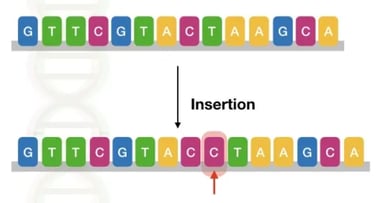

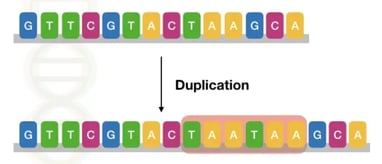
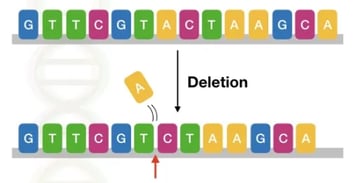

READING YOUR CHILD’S GENETIC REPORT
DNA is made up of 4 chemical building blocks – adenine, thymine, cytosine and guanine — A, T, C and G.
In a section called either “Nucleotide Change” or “cDNA” on your child’s lab report, you may see something like this:
c.1883G>A
This indicates the nucleotide change that has taken place. On nucleotide number 1,883 a G (guanine) has been changed to an A (adenine).
You may also see something like this on the 1st page in a section called either “Protein Change” or “Variant”:
p.R569H
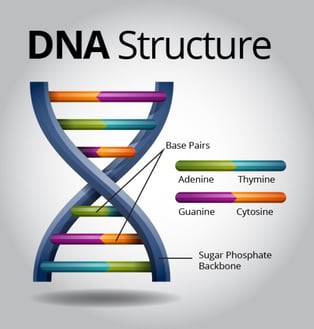

This code indicates the protein change. In this instance, the nucleotide change c.1883G>A has caused the Arginine(R) at amino acid position 569 to be replaced by a Histidine (H). Arginine and Histidine are two types of amino acids.
Most lab reports will show both the DNA (“nucleic acid”) and protein (“amino acid”) changes. These can be used interchangeably.
Other important terms you may see on your reports:
Autosomal Dominant – indicates that an individual has a 50% chance of passing down the mutation to any offspring
Deleterious – harmful
Pathogenic – harmful
Benign – thought to be tolerated (not harmful)
VUS – variant of unclear or uncertain significance (unclear finding)
De Novo – the mutation is present for the first time and was not inherited from either parent.
Heterozygous – having dissimilar pairs of genes
Allele – alternative form of a gene that arises from mutation
Zygosity – the degree to which two alleles in a trait are similar or dissimilar (ex. Heterozygous or homozygous)
Codon – a sequence of three nucleotides together that form a unit of genetic code in a DNA or RNA molecule
Why are all these terms important to know?
As you can see, there are many different types of mutations, which all contribute to how our children are affected. The location of a mutation may provide insight into the pathogenicity of a mutation (whether an alteration in the gene sequence is harmful or not), and it can be helpful to talk with your child’s genetic counselor about where the mutation is located within the gene. For example, changes, or alterations in the genetic sequence may be tolerated at the very end of a gene (also called the “tail” of the gene’s sequence). This means that the different changes to the HIST1H1E gene could manifest differently in the characteristics of individuals that this syndrome affects. There is a wide spectrum in the ways our children are affected.
When an alteration to your child’s genetic sequence is identified, this is called a “mutation.” They may also be called: alterations, variations, variants or chromosomal rearrangements.

